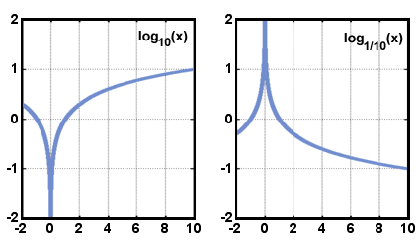Please wait while we process your payment
If you don't see it, please check your spam folder. Sometimes it can end up there.
If you don't see it, please check your spam folder. Sometimes it can end up there.
Please wait while we process your payment

By signing up you agree to our terms and privacy policy.
Don’t have an account? Subscribe now
Create Your Account
Sign up for your FREE 7-day trial
By signing up you agree to our terms and privacy policy.
Already have an account? Log in
Your Email
Choose Your Plan
Individual
Group Discount
Save over 50% with a SparkNotes PLUS Annual Plan!
 payment page
payment page
Purchasing SparkNotes PLUS for a group?
Get Annual Plans at a discount when you buy 2 or more!
Price
$24.99 $18.74 /subscription + tax
Subtotal $37.48 + tax
Save 25% on 2-49 accounts
Save 30% on 50-99 accounts
Want 100 or more? Contact us for a customized plan.
 payment page
payment page
Your Plan
Payment Details
Payment Summary
SparkNotes Plus
You'll be billed after your free trial ends.
7-Day Free Trial
Not Applicable
Renews July 9, 2025 July 2, 2025
Discounts (applied to next billing)
DUE NOW
US $0.00
SNPLUSROCKS20 | 20% Discount
This is not a valid promo code.
Discount Code (one code per order)
SparkNotes PLUS Annual Plan - Group Discount
Qty: 00
SparkNotes Plus subscription is $4.99/month or $24.99/year as selected above. The free trial period is the first 7 days of your subscription. TO CANCEL YOUR SUBSCRIPTION AND AVOID BEING CHARGED, YOU MUST CANCEL BEFORE THE END OF THE FREE TRIAL PERIOD. You may cancel your subscription on your Subscription and Billing page or contact Customer Support at custserv@bn.com. Your subscription will continue automatically once the free trial period is over. Free trial is available to new customers only.
Choose Your Plan
This site is protected by reCAPTCHA and the Google Privacy Policy and Terms of Service apply.
For the next 7 days, you'll have access to awesome PLUS stuff like AP English test prep, No Fear Shakespeare translations and audio, a note-taking tool, personalized dashboard, & much more!
You’ve successfully purchased a group discount. Your group members can use the joining link below to redeem their group membership. You'll also receive an email with the link.
Members will be prompted to log in or create an account to redeem their group membership.
Thanks for creating a SparkNotes account! Continue to start your free trial.
We're sorry, we could not create your account. SparkNotes PLUS is not available in your country. See what countries we’re in.
There was an error creating your account. Please check your payment details and try again.
Please wait while we process your payment

Your PLUS subscription has expired
Please wait while we process your payment
Please wait while we process your payment

Logarithmic Functions
Logarithmic functions are the inverses of exponential functions. The inverse of the exponential function y = ax is x = ay. The logarithmic function y = logax is defined to be equivalent to the exponential equation x = ay. y = logax only under the following conditions: x = ay, a > 0, and a≠1. It is called the logarithmic function with base a.
Consider what the inverse of the exponential function means: x = ay. Given a number x and a base a, to what power y must a be raised to equal x? This unknown exponent, y, equals logax. So you see a logarithm is nothing more than an exponent. By definition, alogax = x, for every real x > 0.
Below are pictured graphs of the form y = logax when a > 1 and when 0 < a < 1. Notice that the domain consists only of the positive real numbers, and
that the function always increases as x increases.

 x.
x.
Here are some useful properties of logarithms, which all follow from identities involving exponents and the definition of the logarithm. Remember a > 0, and x > 0.
logarithm
| loga1 = 0. |
| logaa = 1. |
| loga(ax) = x. |
| alogax = x. |
| loga(bc) = logab + logac. |
loga( ) = logab - logac. ) = logab - logac. |
| loga(xd) = d logax |
A natural logarithmic function is a logarithmic function with base e. f (x) = logex = ln x, where x > 0. ln x is just a new form of notation for logarithms with base e. Most calculators have buttons labeled "log" and "ln". The "log" button assumes the base is ten, and the "ln" button, of course, lets the base equal e. The logarithmic function with base 10 is sometimes called the common logarithmic function. It is used widely because our numbering system has base ten. Natural logarithms are seen more often in calculus.
Two formulas exist which allow the base of a logarithmic function to be changed.
The first one states this: logab =  . The more famous and
useful formula for changing bases is commonly called the Change of Base
Formula. It allows the base of a logarithmic function to be changed to any
positive real number ≠1. It states that logax =
. The more famous and
useful formula for changing bases is commonly called the Change of Base
Formula. It allows the base of a logarithmic function to be changed to any
positive real number ≠1. It states that logax =  . In this case, a, b, and x are all positive real numbers
and a, b≠1.
. In this case, a, b, and x are all positive real numbers
and a, b≠1.
In the next section, we'll discuss some applications of exponential and logarithmic functions.
Please wait while we process your payment

